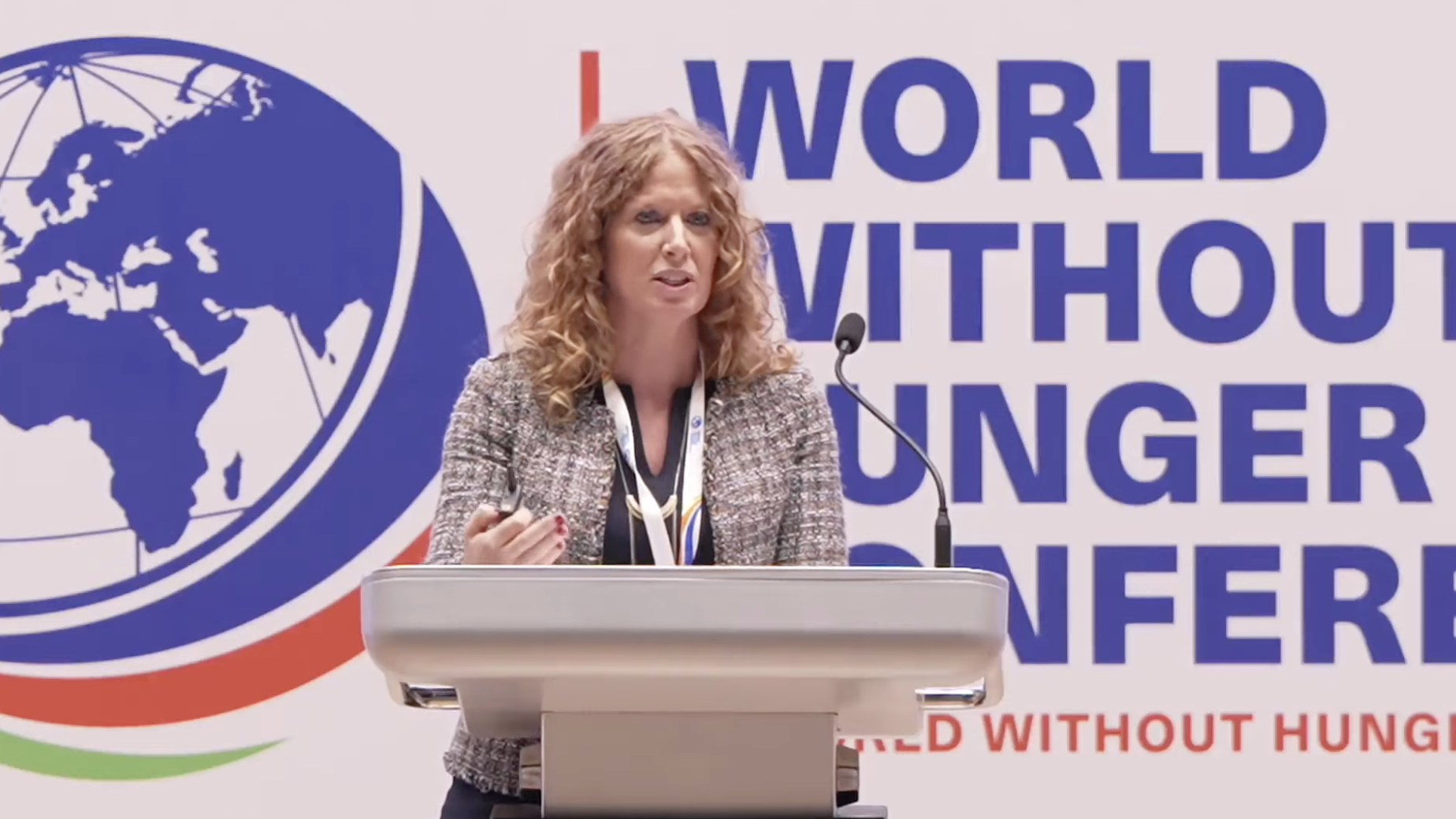
A growth-driven approach to ending hunger
The below article is based on a speech Carin Smaller delivered to present the findings of the report Ending hunger is possible: An income-generating approach through value addition during the World Without Hunger Conference organized by UNIDO, the African Union and the Government of Ethiopia, with technical assistance of FAO, on 5 November in Addis Ababa.
At its recent annual meeting, the World Bank presented a new vision focused on creating jobs and boosting revenues. As its President Ajay Banga stated, “The World Bank is poised to embark on the next phase of our mission, ensuring job creation and employment are not the byproduct of our projects, but an explicit aim of them.”
A new report published by the United Nations’ agencies FAO and UNIDO, in collaboration with Hesat2030, makes a similar case. The report, Ending hunger is possible: An income-generating approach through value addition, calls for ending hunger by focusing on driving growth in productivity and income in the agrifood sector. This is central to job creation.
The report presents a strong case for building efficient supply chains with a focus on low carbon transport, storage, processing, and value addition that prioritizes domestic economies. It calls for making agriculture more diverse, productive and mechanized.
Finding new solutions
Can food systems transformation be viewed as industrial policy? Such an approach is not only more efficient and socially cohesive, but also more resilient to climate change, biodiversity loss, water scarcity and other planetary risks. Increased value addition at the local level encourages the production and consumption of indigenous crops, reduces post-harvest losses, and improves dietary diversity and nutrition.
This can be achieved in six steps.
First, efficiency on the farm. Incomes on the farm can be improved through a combination of mechanization, adoption of digital technology, agricultural research, and extension services. Rather than focusing on production, this calls for increasing efficiency. According to one study reviewed, mechanized land preparation in Zambia increased yields by 25 percent, while the use of tractors in 11 other African countries increased maize yields by approximately half a tonne per hectare.
Farm efficiency is about producing less with more and producing it in the places that need it most. Hunger is not a problem of lack of food at the global scale but rather the discrepancy between where it is produced and where it is consumed.
Second, investment to build and maintain infrastructure. Investments are needed for infrastructure such as irrigation, electricity, rural roads, and storage. But we need to begin where it matters most: reducing post-harvest losses. Post-harvest losses account for 20 percent of food loss in Sub-Saharan African. Reducing these losses and costs along the value chain requires industrialization. However, this infrastructure must be low carbon and widely available to small-scale producers and SMEs.
Third, building processing, distribution and retail sectors. Investing in agrifood processing, particularly by agrifood SMEs in domestic and cross-border markets, is critical to income-generation. Demand is growing for processed foods in Africa, with imports rising from 28 percent in 2000 to 33 percent in 2020. However, the continent lacks skilled labour to fill these industrial jobs with mechanized firms and automated firms reporting significant gaps in skills. This means that vocational training and increased university enrolment in subjects like science, technology, engineering and mathematics is needed to meet the labour demands of the food processing sector.
Food processing can also ensure food safety, extend food shelf life, and enhance the nutritional value of food products. This includes basic food preservation methods such as drying and fermentation to more advanced process such as pasteurization and food fortification.
Fourth, trade and competition policy, combined with stronger regional integration. Without effective trade governance and better enforcement of competition law and policy, the additional investments in industrialization will not suffice to generate decent incomes for small-scale producers and agrifood SMEs. In particular, competition regulation is essential for maintaining affordable food prices. As the FAO Food Price index indicates, when food prices rise in developing countries, they remain high. This is partly due to collusion between the few firms that dominate the fertilizer, feed, food, and retail markets. These firms likely collude to ‘fix prices’ and maintain them artificially high. Preventing such predatory behavior is critical to ending hunger.
Fifth, unlocking finance, primarily for the 'missing middle'. Finance is needed to make these ideas happen. The most underserved group - the “missing middle” - consists of small-scale producers and agrifood SMEs that seek loans valued between USD 25 000 and USD 2 million. However, because these producers and SMEs primarily serve domestic markets and use domestic currencies, they have difficulties accessing loans since they do not have purchasing contracts in hard currency. In Sub-Saharan Africa and Southeast Asia, only a third of their estimated USD 160 billion in financing needs is met.
Strengthening supply chain relationships and trust is key to unlocking more working capital financing for domestic agrifood SMEs. Several strategies can make this happen. However, increased participation by domestic banks and non-bank finance institutions is critical to these financing solutions. Priority lending policies is one example whereby a government mandates that commercial banks lend to underserved sectors such as agriculture. This does not require lending on cheaper terms, but rather that larger volumes of debt financing end up in riskier sectors that have high social and economic value.
Sixth, social protection for productive purposes. Imagine social protection programmes that make more productive use of cash transfers and increase the appetite for risk. Rather than simply transferring cash for consumption, these cash transfers are accompanied by programmes to boost skills and jobs to increase incomes. This has been implemented in Ethiopia with its highly successful Productive Safety Net Programme (PSNP) which provides cash transfers through labour contribution to help build the community and enable long-term growth.
Urgency of action
Our current inaction to end hunger has a price – USD 210 billion. According to the most recent estimates, ending hunger by 2030 will cost an extra USD 540 billion. This contrasts with the projection made by Ceres2030 in 2020 which estimated that ending hunger by 2030 would cost an additional USD 330 billion.
This additional cost is also unsustainable. Nearly half of the additional public investment is associated with large and recurrent social protection payments. However, this option is not fiscally sustainable as aid budgets stagnate and public debt burdens surge. It is also not optimal for those in need as they are trapped in hunger without the skills and job opportunities to escape.
A world without hunger is possible. We know how to do it, and we know how much it would cost. Taking an industrial development approach where job creation and income-generation are prioritized would be a lasting path towards a more sustainable future for all.
Watch Carin’s speech:
